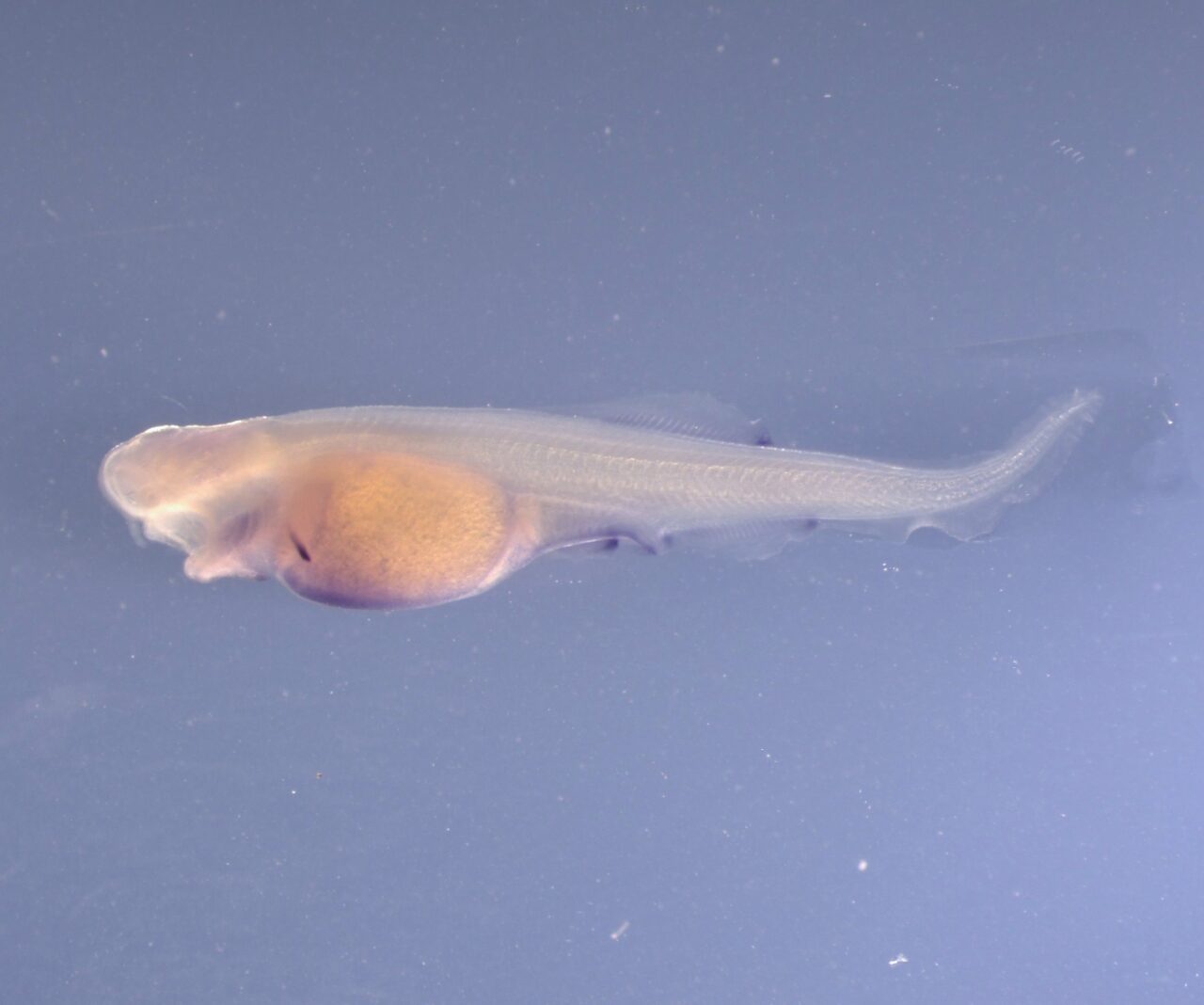New Study Offers Insight Into How Paired Appendages Evolved

From completing life-saving surgeries, to performing heart-gripping music, to fearlessly swimming the English Channel, the possession of paired appendages (arms and legs) is critical to human achievement. However, paired appendages are not unique to humans. Scientists have long known that human limbs evolved from the paired fins found in fishes, but where the first paired fins came from remains one of the great mysteries in evolutionary biology.
Visiting Assistant Professor of Biology Amanda Cass was a co-author of a large, multi-institutional study published in the journal Nature investigating how paired appendages evolved in early vertebrate animals. The study, spearheaded by scientists from the Lee Kong Chian School of Medicine in Singapore, found that a long-ignored embryonic structure found in many fish species, dubbed the Pre-Anal Fin Fold (PAFF), could shed light on the origin of vertebrate paired appendages.
Cass has been studying the paddlefish for nearly a decade, examining the genetic and developmental similarities and differences between fish fins and human limbs. This study went in a new direction, documenting important similarities between the PAFF and paired fins, and suggesting how paired fins may have evolved in the first place. Each contributing research group examined PAFF development in a different species of fish, including the goldfish, lamprey, medaka, shark, and paddlefish.

“We use the paddlefish to explore the evolution of appendages because it sits at a really important place in vertebrate phylogeny,” Cass said. “Because paddlefish fins have changed very little in hundreds of millions of years, they can tell us about ancient features of vertebrate appendage anatomy, and the mechanisms that generated them.”
There have long been two main hypotheses on how paired appendages may have evolved and this study provides support for one of them—that paired fins were derived from a median unpaired fin through lateral fin folds between the pectoral and pelvic fin areas, the study says.
“This study contributes to our understanding of where the first paired fins might have come from, and ultimately, the origin of our own arms and legs,” Cass said.
She adds that she hopes this discovery can contribute to science’s understanding of this one specific “innovation, but also more generally how novel anatomies arise during evolution.”
“The more of these sorts of innovations that we can probe and dissect, the more likely we are to be able to understand how evolutionarily novel structures are generated on a broader scale,” Cass said.
Cass was especially proud of the collaborative aspect of this study, noting that a single-author study is a rarity in modern science. She called it one of the “great triumphs of modern science” that people are able to bring multiple perspectives and areas of expertise to the table to improve the quality and validity of scientific work. “Perhaps it’s fitting then, that many hands were involved in a research project that helps us understand where our hands ultimately came from,” Cass said.

